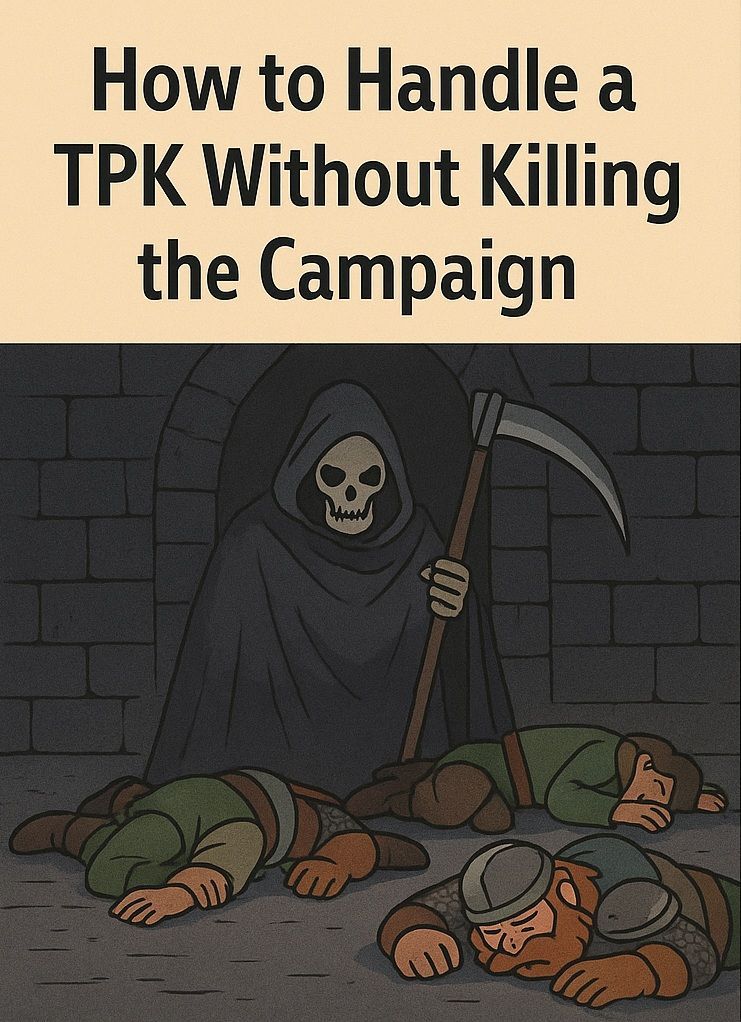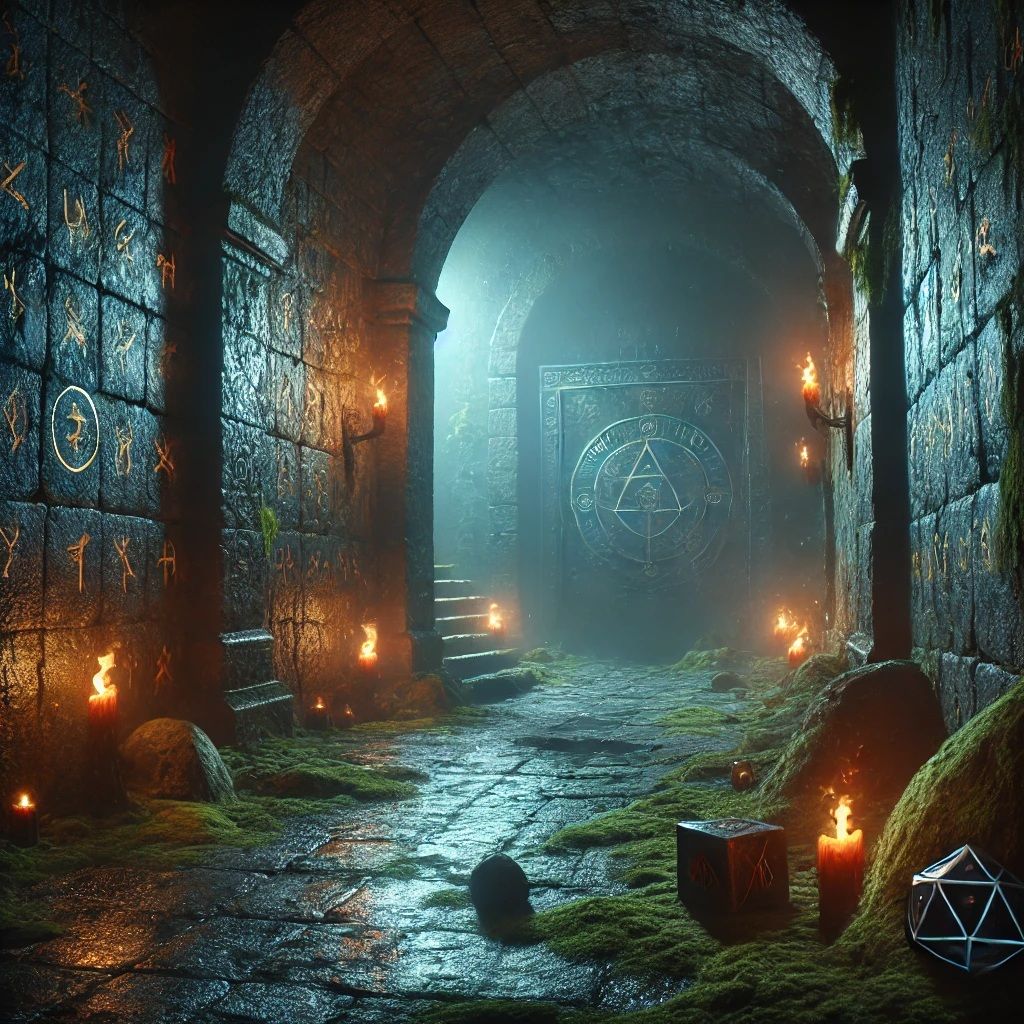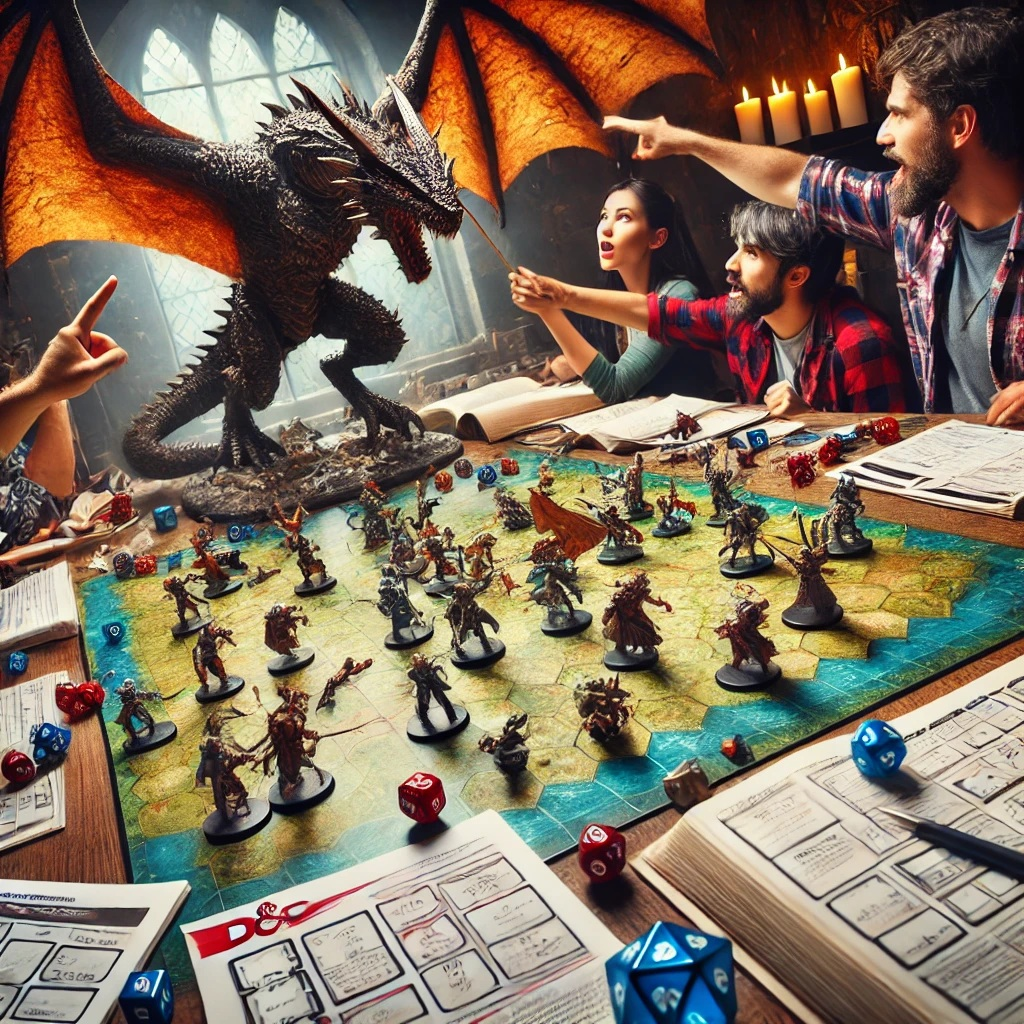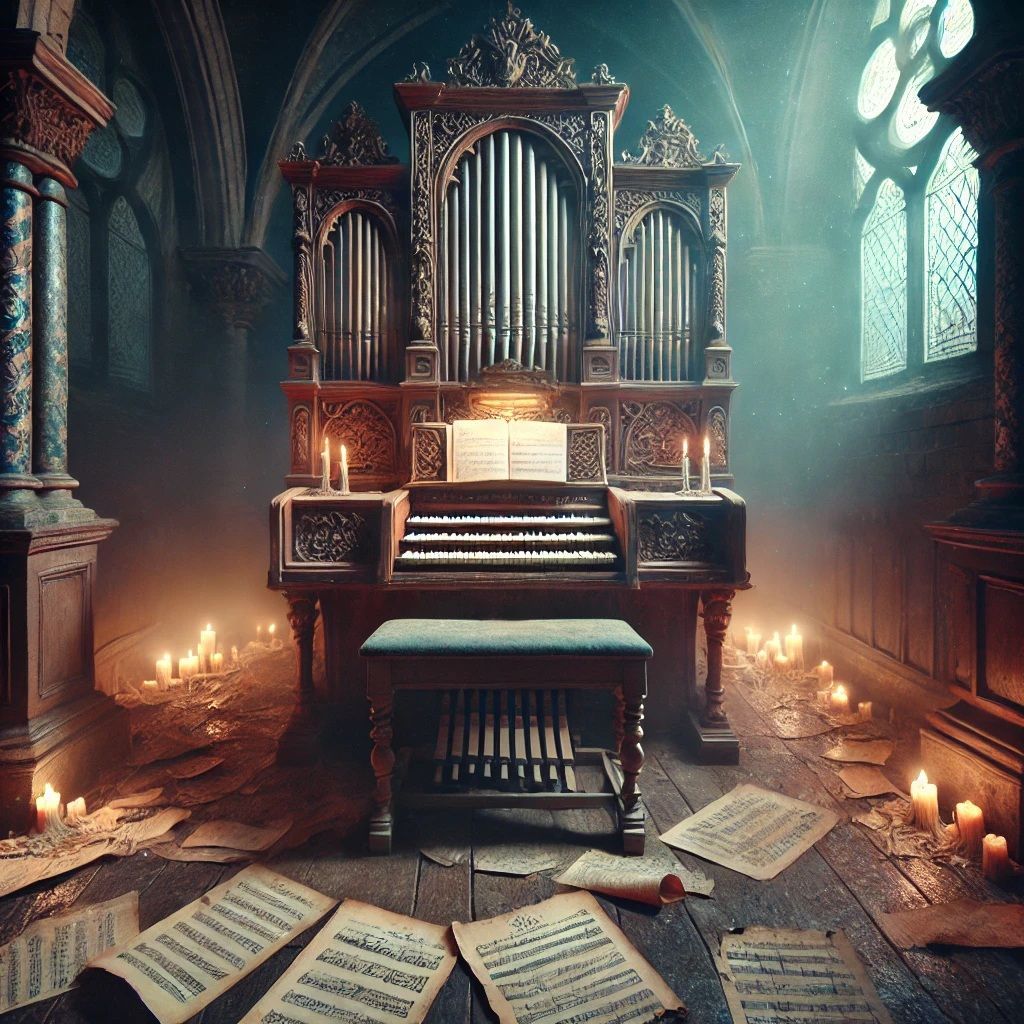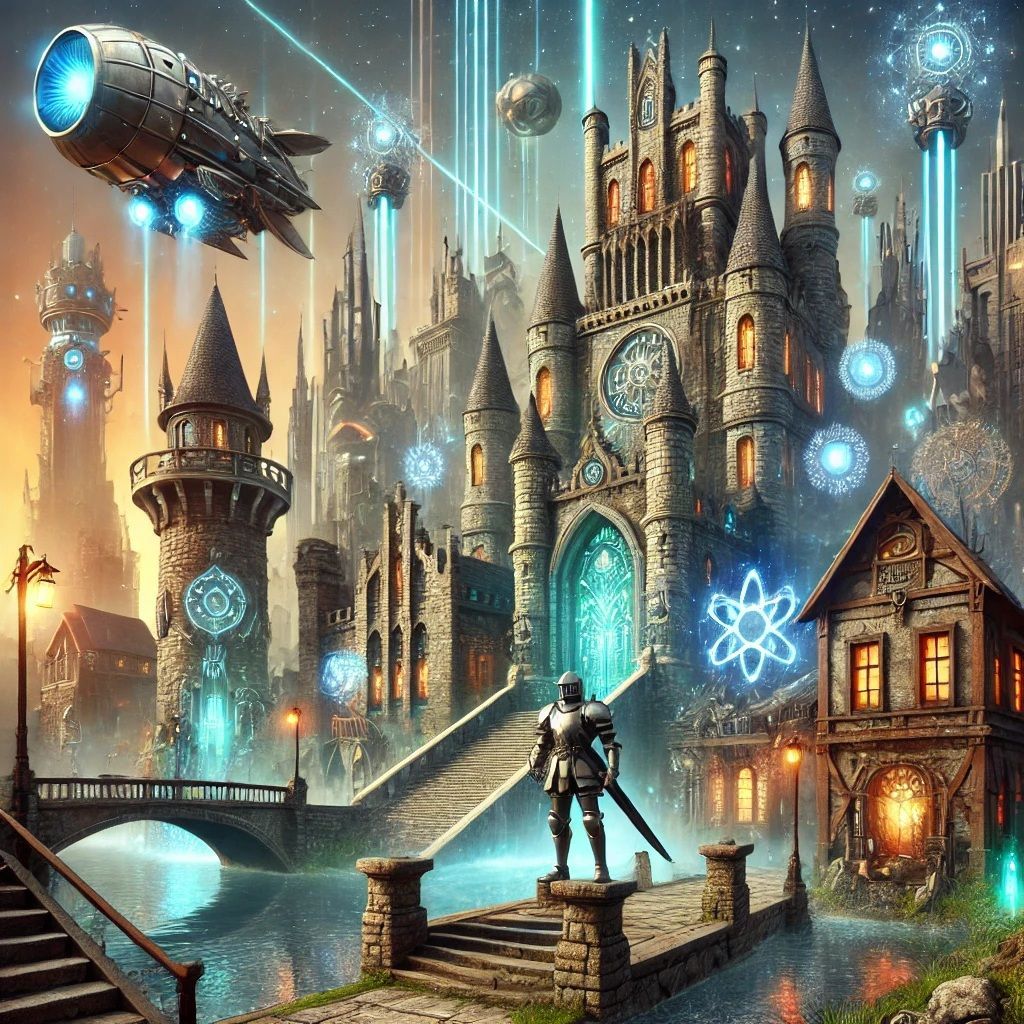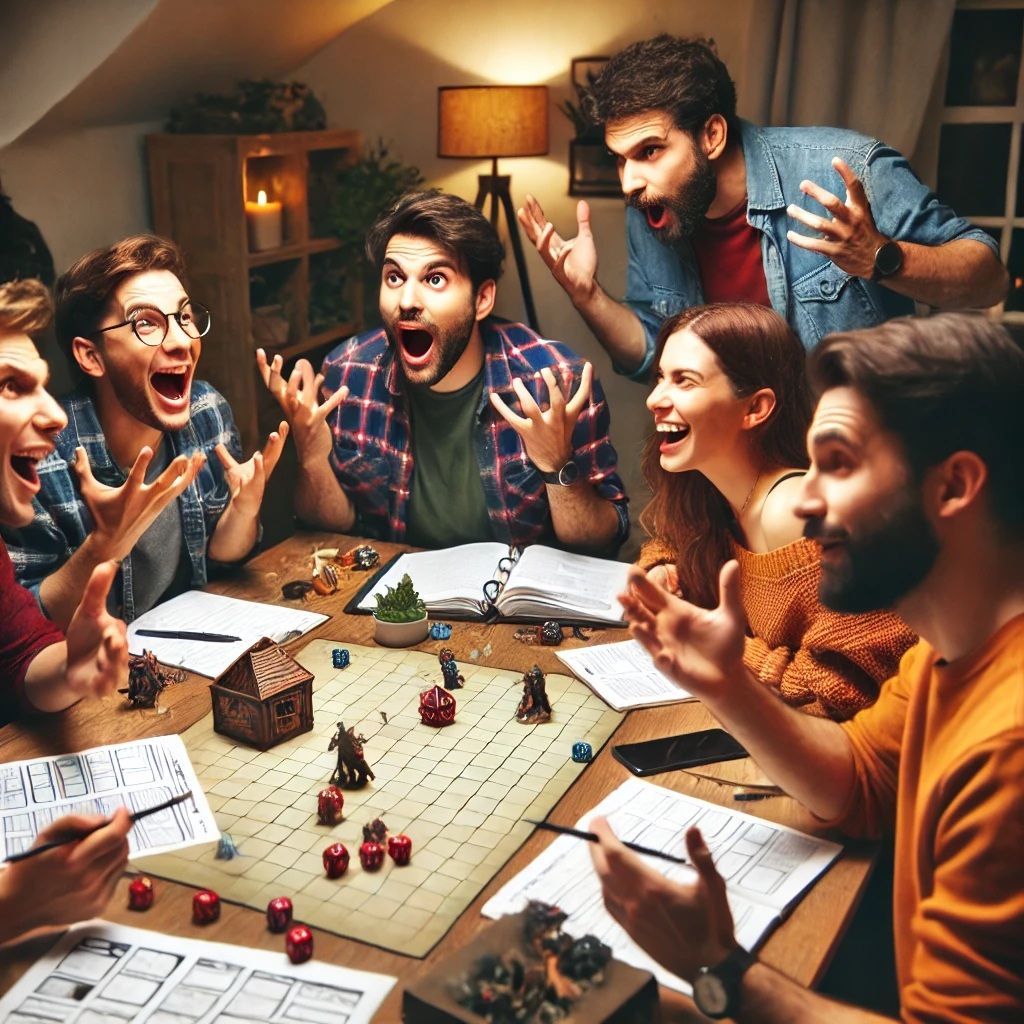Rituals and Ceremonies: Adding Cultural Depth to Your Fantasy World
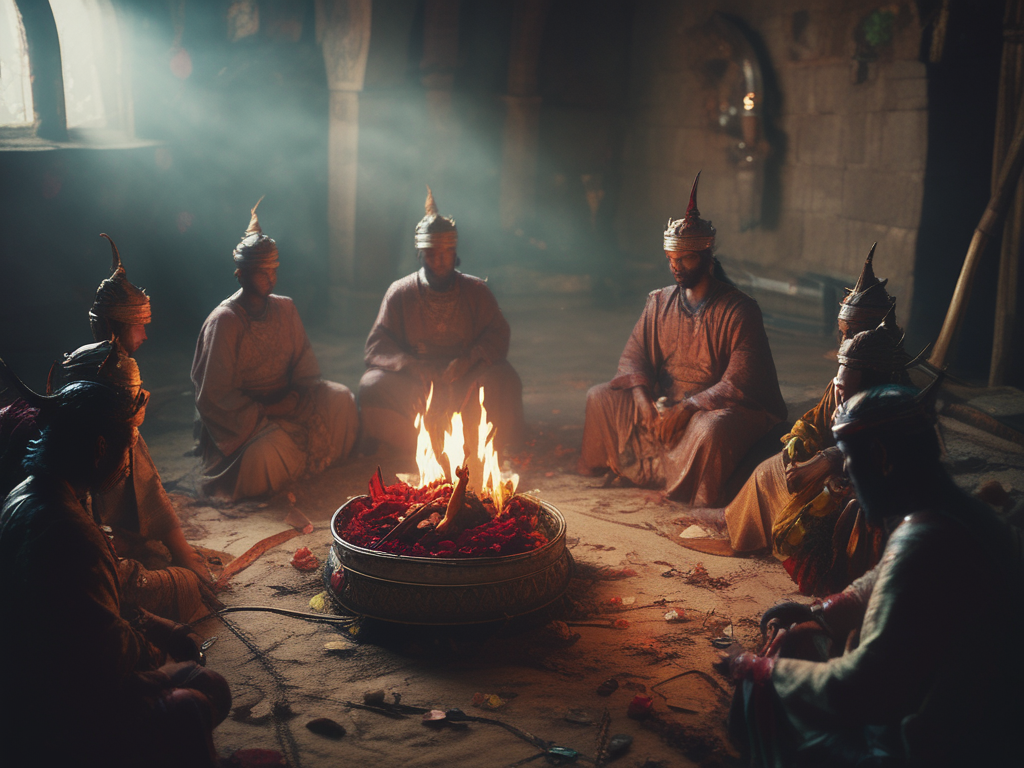
Dear Readers, welcome back to our Dungeons & Dragons (D&D) blog! Today, we’re exploring a captivating way to enrich your fantasy world: incorporating rituals and ceremonies. These elements can add layers of cultural depth, create immersive experiences, and provide unique storytelling opportunities. Rituals and ceremonies are integral to societies, reflecting their values, beliefs, and traditions. By thoughtfully weaving these elements into your campaign, you can bring your world to life in vivid detail. So, let’s delve into the art of creating meaningful rituals and ceremonies for your fantasy world.
Understanding the Importance of Rituals and Ceremonies
Rituals and ceremonies serve various purposes in a society, from religious observances and seasonal celebrations to rites of passage and communal bonding. They help define the cultural identity of a community and provide a sense of continuity and belonging.
Why Include Rituals and Ceremonies in Your Campaign?
1. Cultural Authenticity:
- Rituals and ceremonies make your fantasy cultures feel more authentic and lived-in, adding depth and realism to your world.
2. Narrative Opportunities:
- These elements provide rich narrative opportunities, offering moments of drama, celebration, conflict, and character development.
3. Player Engagement:
- Participating in or witnessing rituals can engage players, making them feel more connected to the world and its inhabitants.
4. Thematic Exploration:
- Rituals and ceremonies can help explore themes such as tradition, faith, community, and change.
Designing Rituals and Ceremonies
When designing rituals and ceremonies for your fantasy world, consider the cultural context, purpose, and elements that make each ritual unique and meaningful.
Cultural Context
The cultural context of a ritual or ceremony includes the beliefs, values, and traditions of the society that practices it. Consider the following aspects when creating the cultural context:
1. Religion and Spirituality:
- What are the dominant religious or spiritual beliefs of the society? How do these beliefs influence their rituals?
Example: In a society that worships nature deities, rituals might involve offerings of flowers, fruits, and natural elements, performed in sacred groves or forests.
2. Social Structure:
- How is the society structured? What are the roles and statuses of individuals within the community? How do these roles influence participation in rituals?
Example: In a hierarchical society, rituals might be led by priests or elders, with specific roles assigned to different social classes.
3. Historical Events:
- What historical events have shaped the society? Are there rituals that commemorate significant victories, tragedies, or milestones?
Example: A ceremony commemorating a legendary battle might include reenactments, storytelling, and honoring fallen heroes.
Purpose of Rituals and Ceremonies
Understanding the purpose of a ritual or ceremony helps define its structure and significance. Common purposes include:
1. Religious Observances:
- Rituals performed in honor of deities, spirits, or cosmic forces, often involving prayers, sacrifices, and symbolic acts.
Example: A harvest festival dedicated to the goddess of agriculture might include offerings of the first fruits, dances, and blessings for a bountiful harvest.
2. Rites of Passage:
- Ceremonies marking important life transitions, such as birth, coming of age, marriage, and death.
Example: A coming-of-age ceremony might involve trials or quests that test the youth’s bravery, wisdom, and skills, culminating in a celebratory feast.
3. Seasonal Celebrations:
- Festivals and ceremonies linked to the changing seasons, agricultural cycles, and natural phenomena.
Example: A spring festival celebrating renewal and growth might include planting rituals, dances, and the lighting of symbolic fires.
4. Communal Bonding:
- Rituals that strengthen community ties, promote social cohesion, and reinforce shared values.
Example: A communal meal held regularly to honor ancestors and bring the community together might involve storytelling, music, and shared food.
Elements of Rituals and Ceremonies
To create a rich and immersive ritual or ceremony, consider incorporating various elements that engage the senses and convey meaning.
1. Symbolic Acts:
- Actions that hold symbolic significance, such as lighting candles, drawing symbols, or making offerings.
Example: In a ritual to ward off evil spirits, participants might draw protective symbols in the dirt and light candles to banish darkness.
2. Costumes and Decorations:
- Special attire, masks, and decorations that reflect the cultural aesthetics and themes of the ritual.
Example: Participants in a harvest festival might wear colorful costumes adorned with fruits and flowers, and the ritual space might be decorated with garlands and banners.
3. Music and Dance:
- Songs, chants, instrumental music, and dances that enhance the atmosphere and convey the mood of the ritual.
Example: A ceremonial dance performed to honor the sun god might involve rhythmic drumming, chanting, and intricate dance movements.
4. Sacred Objects:
- Objects with religious or cultural significance, such as relics, idols, or talismans, used in the ritual.
Example: A ritual to seek the blessing of a river spirit might involve a sacred bowl used to collect water from the river, along with offerings of flowers and coins.
Examples of Rituals and Ceremonies
Here are some examples of rituals and ceremonies that you can adapt and incorporate into your fantasy world.
The Rite of the Eternal Flame
Cultural Context:
- The Rite of the Eternal Flame is practiced by a society that worships a fire deity known as the Eternal Flame. The ritual is performed to seek the deity’s blessing and ensure the community’s prosperity and protection.
Purpose:
- Religious observance and communal bonding.
Elements:
- Symbolic Acts: Participants light a central bonfire using a sacred flame kept in the temple throughout the year. Offerings of incense, oil, and herbs are thrown into the fire.
- Costumes and Decorations: Participants wear red and gold robes, and the ritual space is decorated with fire-themed symbols and banners.
- Music and Dance: Drummers and musicians play rhythmic music, and a group of dancers performs a fire dance around the bonfire.
- Sacred Objects: The sacred flame, kept in a golden brazier, is carried by the high priest to light the bonfire.
Narrative Opportunity:
- As the ritual progresses, a dark omen appears in the flames, foretelling an imminent threat to the community. The players must investigate the omen and uncover the source of the danger.
The Passage of Shadows
Cultural Context:
- The Passage of Shadows is a rite of passage practiced by a secretive order of assassins. The ritual marks the transition from novice to full-fledged member, testing the initiate’s skills, loyalty, and resolve.
Purpose:
- Rite of passage.
Elements:
- Symbolic Acts: The initiate must navigate a labyrinth filled with traps and illusions, retrieve a hidden relic, and return it to the order’s leader.
- Costumes and Decorations: Initiates wear black robes and masks to symbolize their anonymity and dedication to the order. The labyrinth is decorated with shadowy motifs and lit by flickering torches.
- Music and Dance: A haunting melody is played on a flute, creating an eerie atmosphere. The initiate’s movements through the labyrinth are considered a dance of shadows.
- Sacred Objects: The hidden relic, an obsidian dagger, symbolizes the initiate’s readiness to serve the order.
Narrative Opportunity:
- One of the players is invited to join the order and undergo the Passage of Shadows. During the ritual, they discover a plot against the order’s leader and must decide whether to reveal the truth or complete their initiation.
The Festival of the Silver Moon
Cultural Context:
- The Festival of the Silver Moon is celebrated by a coastal community that worships a moon goddess. The festival coincides with the full moon and high tide, honoring the goddess’s influence over the sea and tides.
Purpose:
- Seasonal celebration and religious observance.
Elements:
- Symbolic Acts: Participants light lanterns and set them afloat on the sea, symbolizing the moon’s reflection on the water. Offerings of shells, pearls, and fish are made at the temple.
- Costumes and Decorations: Participants wear silver and blue garments adorned with moon and sea motifs. The festival area is decorated with lanterns, seashells, and flowing ribbons.
- Music and Dance: Musicians play melodic tunes on lutes and harps, and dancers perform graceful movements mimicking the ebb and flow of the tide.
- Sacred Objects: A silver chalice used in the ritual to collect seawater, which is then blessed by the high priestess and sprinkled on the participants.
Narrative Opportunity:
- During the festival, a mysterious sea creature appears, bringing both wonder and fear to the community. The players are tasked with uncovering the creature’s origins and intentions.
Integrating Rituals and Ceremonies into Your Campaign
Integrating rituals and ceremonies into your campaign can enhance the storytelling and provide memorable experiences for your players. Here are some tips for seamlessly incorporating these elements into your game.
1. Use Rituals as Plot Hooks
Rituals and ceremonies can serve as compelling plot hooks, drawing the players into the story and motivating their actions.
Example: The players are hired to protect a sacred ritual from being disrupted by a rival faction. As they investigate, they uncover deeper political and religious tensions within the community.
2. Create Character Connections
Linking rituals to the characters’ backgrounds and motivations can add personal stakes and emotional depth to the story.
Example: A player’s character seeks to perform a long-forgotten ritual to honor their ancestors and lift a family curse. The quest to uncover the ritual’s details and gather the necessary components becomes a central storyline.
3. Enhance World-Building
Incorporating rituals and ceremonies can enhance world-building by showcasing the unique cultures and traditions of your fantasy world.
Example: As the players travel through different regions, they encounter various rituals and ceremonies that reflect the local customs and beliefs, providing a rich tapestry of cultural diversity.
4. Foster Role-Playing Opportunities
Rituals and ceremonies provide excellent opportunities for role-playing, allowing players to engage with NPCs, make meaningful choices, and explore their characters’ beliefs and values.
Example: During a religious ceremony, the players must decide whether to adhere to local customs or challenge them, leading to complex interactions and potential conflicts.
5. Introduce Mystical Elements
Rituals often involve mystical and supernatural elements, making them ideal for introducing magical phenomena, ancient prophecies, and divine interventions.
Example: A ritual to summon a celestial being goes awry, causing a tear in the fabric of reality. The players must navigate the resulting chaos and find a way to restore balance.
Case Studies: Rituals and Ceremonies in Action
Let’s explore a few case studies to illustrate how rituals and ceremonies can be effectively integrated into a campaign, providing rich narrative opportunities and engaging gameplay.
Case Study 1: The Rite of Renewal
Background:
- The Rite of Renewal is an annual spring ritual performed by the inhabitants of the village of Greenhaven. The ritual celebrates the return of life and fertility to the land, invoking the blessings of the nature deity, Verdantia.
Purpose:
- Religious observance and communal bonding.
Elements:
- Symbolic Acts: The ritual involves planting a sacred seed in the village square, symbolizing growth and renewal. Villagers offer prayers, songs, and dances to Verdantia.
- Costumes and Decorations: Participants wear green and floral attire, and the village is decorated with garlands, ribbons, and fresh flowers.
- Music and Dance: Folk musicians play lively tunes, and villagers perform traditional dances around the planted seed.
- Sacred Objects: The sacred seed, blessed by the village druid, is the focal point of the ritual.
Narrative Opportunity:
- The players arrive in Greenhaven just as preparations for the Rite of Renewal are underway. They are invited to participate in the festivities but soon discover that the sacred seed has been stolen by a group of bandits seeking to exploit its magical properties. The players must recover the seed and ensure the ritual’s success.
Outcome:
- The players’ successful recovery of the seed not only earns them the villagers’ gratitude but also uncovers a deeper plot involving a rival druidic order. This sets the stage for future adventures and alliances.
Case Study 2: The Blood Moon Sacrifice
Background:
- The Blood Moon Sacrifice is a dark and ancient ritual performed by a cult dedicated to the moon goddess, Lunaria. The ritual requires a human sacrifice under the light of the blood moon to grant the cult leaders immense power.
Purpose:
- Religious observance and empowerment.
Elements:
- Symbolic Acts: The ritual involves a series of chants, bloodletting, and the final sacrifice of a chosen victim. The cultists believe this act will invoke Lunaria’s favor and power.
- Costumes and Decorations: Cultists wear red and black robes, and the ritual space is decorated with blood-red symbols and moon imagery.
- Music and Dance: Eerie, hypnotic chants and rhythmic drumming accompany the ritual, creating a sense of dread and anticipation.
- Sacred Objects: A ceremonial dagger and a bloodstone altar are central to the ritual.
Narrative Opportunity:
- The players learn of the cult’s plans and are tasked with stopping the ritual before the blood moon rises. They must infiltrate the cult’s stronghold, rescue the intended sacrifice, and confront the cult leader.
Outcome:
- The players’ intervention not only saves the victim but also prevents the cult from gaining dangerous power. The experience exposes them to the darker side of the world and forges strong bonds among the party members as they face the cult’s horrors together.
Case Study 3: The Ascension of the High Priestess
Background:
- The Ascension of the High Priestess is a grand ceremony held in the temple city of Elysia. The ritual marks the elevation of a new high priestess, believed to be chosen by the gods to lead the faith.
Purpose:
- Religious observance and rite of passage.
Elements:
- Symbolic Acts: The ritual involves anointment with sacred oils, the recitation of divine oaths, and the presentation of the high priestess’s staff, a symbol of divine authority.
- Costumes and Decorations: The high priestess wears ornate robes adorned with celestial symbols, and the temple is lavishly decorated with gold and silver.
- Music and Dance: Hymns and chants sung by the temple choir, accompanied by the graceful movements of temple dancers, enhance the ritual’s solemnity.
- Sacred Objects: The high priestess’s staff and a sacred relic believed to hold the essence of the gods.
Narrative Opportunity:
- The players are invited to witness the Ascension ceremony as honored guests. However, they discover that a rival faction within the temple seeks to disrupt the ritual and claim power for themselves. The players must navigate the political intrigue, protect the high priestess, and ensure the ritual’s completion.
Outcome:
- The players’ actions help thwart the rival faction’s plans and solidify the high priestess’s position. Their involvement in the ceremony earns them powerful allies within the temple and sets the stage for future religious and political intrigue.
Practical Tips for Creating and Running Rituals and Ceremonies
To effectively create and run rituals and ceremonies in your campaign, consider the following practical tips:
1. Plan Ahead
Detailed Planning:
- Plan the key elements of the ritual or ceremony in advance, including its purpose, structure, and participants. This ensures a coherent and immersive experience.
Example: Outline the sequence of events, key NPCs involved, and potential challenges or conflicts that might arise during the ritual.
2. Engage the Senses
Sensory Details:
- Engage the players’ senses by describing the sights, sounds, smells, and textures associated with the ritual. This enhances immersion and brings the scene to life.
Example: Describe the flickering candlelight, the scent of incense, the rhythmic drumming, and the vibrant colors of the participants’ costumes.
3. Involve the Players
Active Participation:
- Encourage players to actively participate in the ritual or ceremony, whether through role-playing, skill checks, or decision-making.
Example: Players might be asked to perform specific tasks, make offerings, or interpret omens during the ritual.
4. Create Meaningful Choices
Decisions and Consequences:
- Present the players with meaningful choices that can influence the outcome of the ritual and have lasting consequences.
Example: The players might need to decide whether to adhere to tradition or introduce a new element to the ritual, affecting the community’s response and future events.
5. Use Rituals to Drive the Plot
Plot Advancement:
- Use rituals and ceremonies to advance the plot, introduce new story arcs, or reveal important information.
Example: A prophecy revealed during a ritual sets the players on a quest to prevent a looming catastrophe.
Conclusion
Rituals and ceremonies are powerful tools for adding cultural depth, narrative richness, and immersive experiences to your D&D campaign. By thoughtfully designing and incorporating these elements, you can create a vibrant and dynamic world that resonates with your players and enhances their connection to the story.
Remember to consider the cultural context, purpose, and sensory details of each ritual, and to involve your players in meaningful and engaging ways. Whether through religious observances, rites of passage, seasonal celebrations, or communal bonding, rituals and ceremonies offer endless possibilities for storytelling and character development.
Until next time, Dear Readers…















